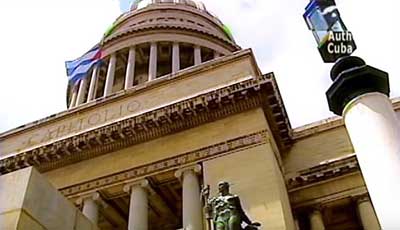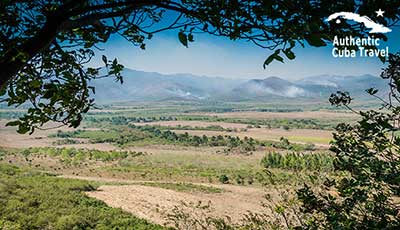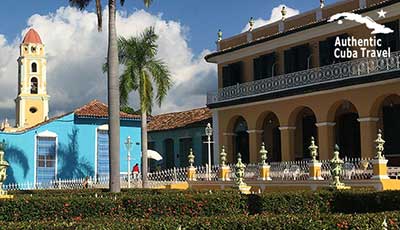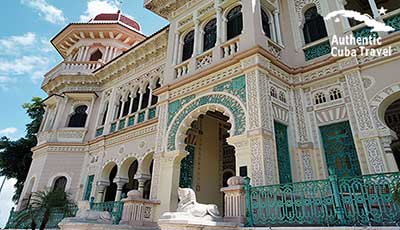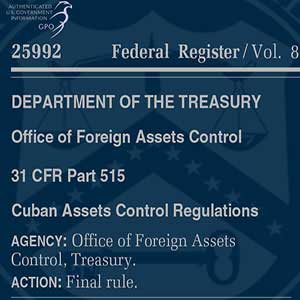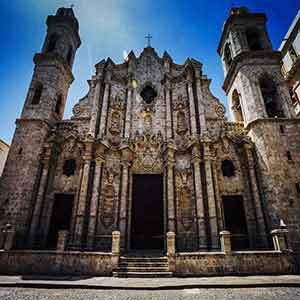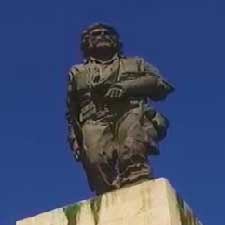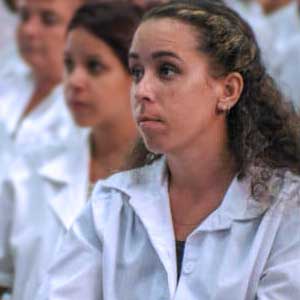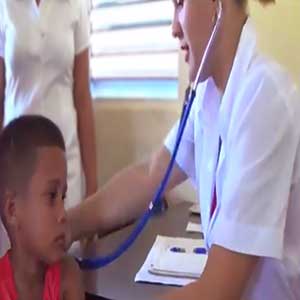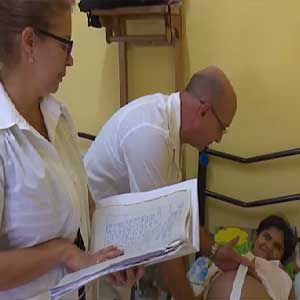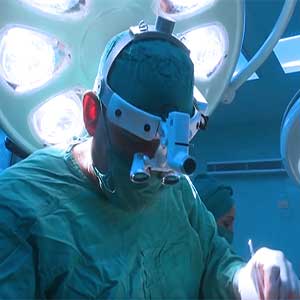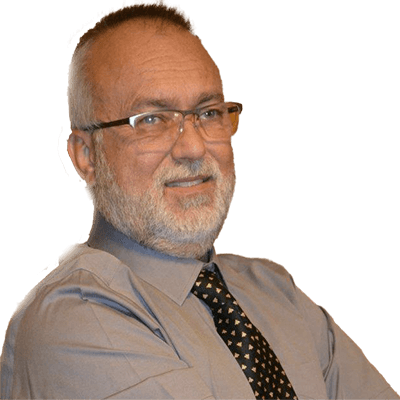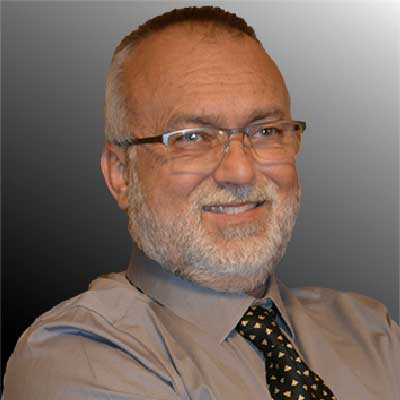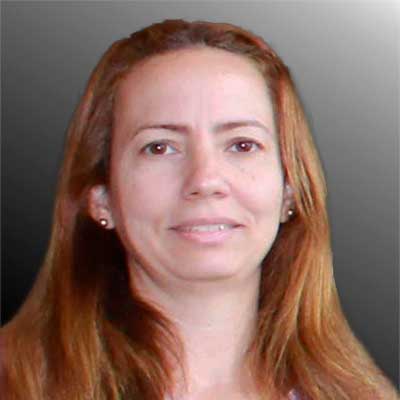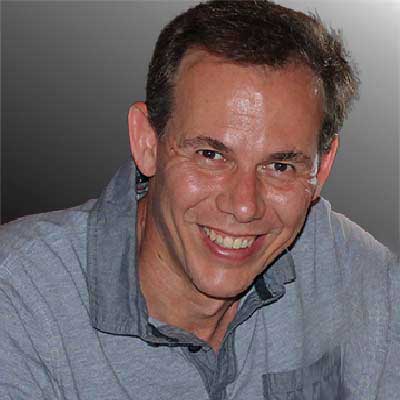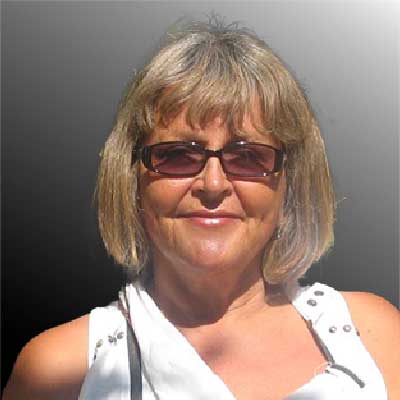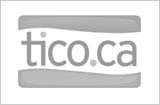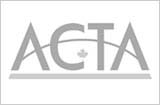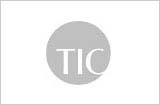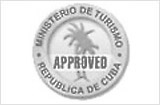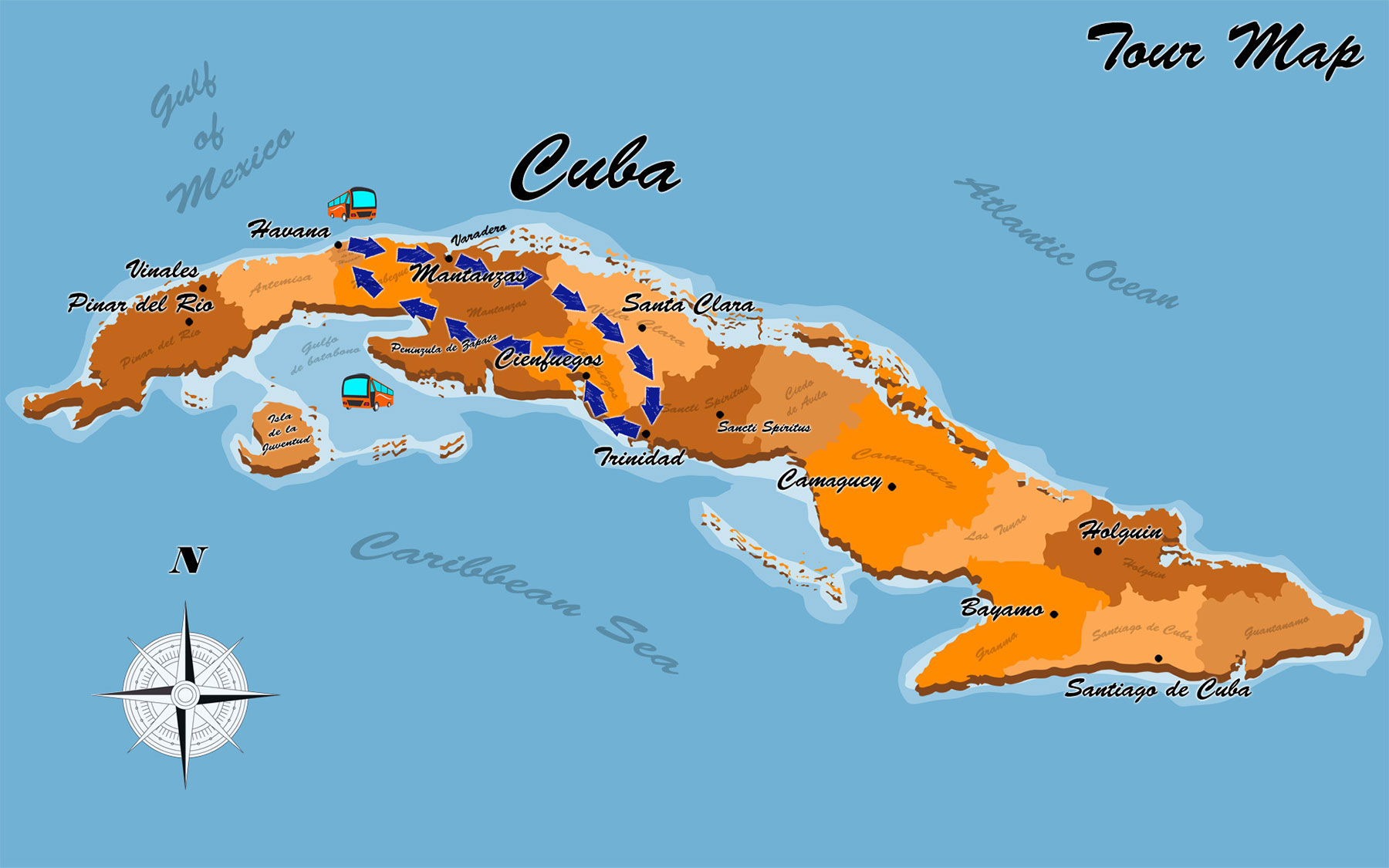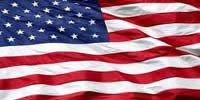HealthCare Cuba Tours & Travel
Cuba Tours & Travel for Healthcare Professionals, Medicine Professors, Students and Faculty and other Medical Professionals interested in conducting Professional Research and attending Professional Meetings about Cuba’s HealthCare System
March 2026, July 2026, November 2026
Travel to 4 UNESCO World Heritage Sites: Old Havana, Cienfuegos, Trinidad & The Sugar Mill Valley for $2,599 (all taxes included)
Referral Discount: $100
And remember every person you invite will also receive a $100 discount!
Healhcare Tour Departures:
Authentic Cuba Travel® warmly invites healthcare professionals; medicine professors, faculty and students; and all those interested in conducting professional research and attending professional meetings related to Cuba’s healthcare system from US, Canada and all over the world to join our official Cuba Healthcare tours.
Thousands of healthcare providers in North America have learned about Cuban healthcare, medicine, prevention and healing following the blockbuster documentary SiCKO by US filmmaker Michael Moore.
This Cuba tour for healthcare professionals represents a rare glimpse into Cuba's medical system for North American healthcare professionals seeking to establish enduring working relationships with their island counterparts and to witness Cuban medicine, wellness and health programs directly.
As you explore America’s largest and best preserved Spanish historical cores such as UNESCO World Heritage Sites: Old Havana, Cienfuegos and Trinidad Historical Centres, you will enjoy cross cultural/ people-to-people experiences that will remain with you for the rest of your life. You will be fascinated by the Cuban people, the culture, and the social/political/economic structure of Cuba.
The National Health System is organized at three levels (national, provincial, and municipal), which mirror the country’s administrative structure. According to the World Health Organization (WHO), Cuba provides a doctor for every 170 residents, and has the second highest doctor to patient ratio in the world. Cuba's core health strategy is prevention. From promoting exercise, hygiene and regular check-ups, the system is geared towards averting illnesses and treating them before they become advanced and costly.
Despite the setbacks of the 1990's, Cuba's Health indices did not decline during that decade, but continued to improve. Many new innovations in the fields of Biotechnology and Health Tourism were achieved, as well as a remarkable integration of Natural and Traditional Medicine at all levels of care. Cuba's system of Hospitals, Polyclinics, and Family Doctors continues to reach all sectors of the Cuban population with a variety of preventive, therapeutic, and curative practices.
The Exodus of Healthcare Workers
Jose Angel Portal Miranda, Cuba’s Minister of Public Health, has characterized 2023 as one of the most challenging years for the nation’s healthcare system. He openly recognized the ongoing systemic crisis within the sector and emphasized the urgent need for revitalization.
“There are significant shortcomings in service organization and management of essential processes for both primary and secondary care, leading to widespread dissatisfaction” Portal Miranda stated. He noted that the quality of care provided at health facilities is subpar and warned that ongoing shortages of medical supplies would necessitate continuous adjustments in operations.
Portal acknowledged the troubling trend of healthcare professionals migrating abroad or transitioning to other sectors within the national economy. He stressed the importance of addressing issues that compromise the quality of medical education, which ultimately affects the training of future healthcare providers and the quality of services offered.
In October 2023, public health officials reported that over 8,000 undergraduate students, more than 5,000 postgraduate students, and over 1,400 faculty members from medical schools had left the system.
The deterioration of Cuba's healthcare system has escalated. Data from the Statistical Yearbook on Health and Social Assistance revealed a loss of 46,000 healthcare workers from 2021 to 2022, including over 12,000 doctors, 7,414 nurses, and more than 3,000 dentists.
The primary reasons for this exodus appear to be migration to other countries, inadequate salaries, a lack of essential supplies, rumors of potential travel restrictions for healthcare workers, and increased workloads due to unfilled positions.
Portal acknowledged that the lack of resources, equipment, supplies, and medications has contributed to public dissatisfaction.
In an effort to address the ongoing shortages, the Cuban government has sought donations from abroad. On January 28, 2024, the “William Soler” Pediatric Hospital and the Institute of Gastroenterology received contributions from organizations such as Puentes de Amor and Code Pink.
Throughout 2023, the healthcare system in Santiago de Cuba benefited from 96 donations, including ambulances and neonatal equipment, facilitated by solidarity groups from Spain. Additionally, international organizations like the World Health Organization, Pan American Health Organization, United Nations Development Program, and UNICEF have also made recent donations to support the Cuban healthcare system.
Authentic Cuba Travel® staff has years of experience in the Cuba travel industry and with North Americans travellers. If you really want to conduct research on the Cuba's Healtcare system and visit the real Cuba that lies beyond the confines of all-inclusive full-packed tourist resorts, this Healtcare Professionals Cuba tour is for you!
Please, check the day-by-day itinerary below
Take A Sneak Peak of Cuban Destinations You Will Visit
GENERAL LICENSE FOR PROFESSIONAL RESEARCH CUBA TRAVEL
US Physicians, Chiropractors, Laboratory Technicians, Nurses, Emergency Medical Technicians, Dentists, Dietitians, Environmental Health Specialists; Medicine Professors, Faculty and students; and other Medical Professionals interested in conducting professional research on the Cuban medical system can travel to Cuba under the provisions of the General License for Professional Research.
CATEGORY: General license for Professional Research- 31 C.F.R. § 515.564(a)(1)(2) of the current Office of Foreign Assets Control (OFAC) regulations.
(1) Professional research. The travel-related transactions set forth in § 515.560(c) and such additional transactions as are directly incident to professional research are authorized, provided that:
(i) The purpose of the research directly relates to the traveler's profession, professional background, or area of expertise, including area of graduate-level full-time study; and
(ii) The traveler's schedule of activities does not include free time or recreation in excess of that consistent with a full-time schedule of professional research.
(2) Professional meetings. The travel-related transactions set forth in § 515.560(c) and such additional transactions as are directly incident to attendance at, or organization of, professional meetings or conferences in Cuba are authorized, provided that:
(i) For a traveler attending a professional meeting or conference, the purpose of the meeting or conference directly relates to the traveler's profession, professional background, or area of expertise, including area of graduate-level full-time study;
(ii) For a traveler organizing a professional meeting or conference on behalf of an entity, either the traveler's profession must be related to the organization of professional meetings or conferences or the traveler must be an employee or contractor of an entity that is organizing the professional meeting or conference; and
(iii) The traveler's schedule of activities does not include free time or recreation in excess of that consistent with a full-time schedule of attendance at, or organization of, professional meetings or conferences.
We provide our US travelers with all the required documentation to ensure they are in compliance with 2025 Trump administration’s rules on Cuba travel under the US Cuba Travel category: Professional Research and Professional Meetings. US travelers can choose to depart to Cuba from any US port of their choosing.
Cuba Real Tours
Cuba Education Tours
Cuba Engage Tours
Cuba's Healthcare System
Cuba’s health policies promote sustainable human development with the objectives of greater well-being and a higher quality of life, primarily in the areas of health, education, culture, employment, safety, and social welfare. The National Health System is organized at three levels (national, provincial, and municipal), which mirror the country’s administrative structure. The Cuban health system is financed by the State. The population receives free preventive, curative, and rehabilitation services, which range from primary care, routine medical attention, and dentistry to hospital care requiring the use of highly sophisticated medical technologies. In addition, all necessary diagnostic testing and drugs are provided free of charge to pregnant women and to persons receiving outpatient care in the context of certain programs. Out-of-pocket expenditures for families include drugs prescribed for outpatient treatment, hearing aids, dental and orthopedic apparatuses, wheelchairs, crutches, and eyeglasses. The prices for all these items are low and are subsidized by the State.
What's Included?
- Professional Research General License Documentation (for USA Travelers).
- Full-Time Schedule of Professional Research Activities.
- 4 nights at Casa Particular or Quinta Avenida Hotel in Havana with breakfast included.
- 3 nights at Casa Particular in Cienfuegos with breakfast included.
- Guided educational tour of Old Havana, a UNESCO World Heritage Site.
- Guided educational tour of UNESCO World Heritage Site, Cienfuegos Centre.
- Guided educational tour of Trinidad, a UNESCO World Heritage Site.
- Guided educational tour of UNESCO World Heritage Site, Sugar Mill Valley.
- Professional Meeting at the Latin American School of Medicine, the largest in the world.
- Professional Meeting at the Hospital Che Guevara, Cuba’s premier cardio centre.
- Professional Meeting at the Hospital Clinico Quirurgico Hermanos Ameijeira, Cuba’s premier hospital.
- Professional Meeting at the Villa Clara Medical Institute.
- Professional Meeting at a Maternity Home to learn about maternity & child care.
- Professional Meeting at Community Clinic and Family Doctor’s Office in Trinidad.
- Professional Meeting at Community Clinic and Family Doctor’s Office in Cienfuegos.
- Professional Meeting at the National Center for Sexual Education.
- Schedule of Activities to Conduct Professional Research on Cuba’s Healthcare Education and Medical Education Research.
- Schedule of Activities to Conduct Professional Research on Cuba’s Diagnosis, Care and Treatment of Cardiac and Vascular Disease.
- Schedule of Activities to Conduct Professional Research on Cuba’s Preventive Medicine, Primary Care and Community-based Outreach.
- Schedule of Activities to Conduct Professional Research on Cuba’s Specialized Medical Care.
Cuba Tour Itinerary
-
Day 1. Your Healthcare Cuba Tour Starts Today! 
Arrival at "Jose Marti" International Airport in Cuba's capital city.
Meet your Authentic Cuba Travel® tour guide and bus driver.
Private transfer to your your hotel Valentin Quinta Avenida (Valentin 5th Avenue) or Luxury Casa Particular located at the cultural center of Havana City.
During the Obama and Trump administrations, the Cuban government significantly eased restrictions on Cubans to rent out rooms in their homes to foreign travelers. Soon Casas Particulares (private rental accommodations owned by a Cuban family or individual) boomed all through the island. Today some of these humble businesses have evolved into high-end full service boutique hotels offering high quality amenities, food and beverage services, wireless internet connection, and the highest level of customer care.
The luxurious 186-room Valentin Quinta Avenida was previously operated by US Starwood Hotels & Resorts. In 2016, this hotel opened as the Four Points Havana becoming the first American hotel in Cuba after the Revolution. The hotel is currently managed by the Valentin Hotel Group, a hotel chain based in Mallorca, Spain.
5-Star Valentin Quinta Avenida (Valentin 5th Avenue)
Address: 5ta Ave, e/ 76 y 80, Miramar, Playa, Havana, Cuba.
Postal Code: 11300.
Telephone: (+53 7) 214 1470 Ext. 8070 & 8071 / (+53 7) 214 1476
Breakfast is complimentary from 7:00 a.m. to 10:00 a.m. -
Day 2. Cuba's Healthcare Educational System Morning: the first activity in our full-time schedule of professional research this morning, it is to attend professional meetings with healthcare and medical professors and students at the Escuela Latinoamericana de Medicina – ELAM (Latin American School of Medicine). Established in 1999 and finance by the generosity of people of Cuba, ELAM is the largest medical school in the world with a current enrollment of over 10,000 students from over 29 countries.
All its students are from outside Cuba and mainly come from Latin America, the Caribbean and Africa. The school also accepts disadvantaged students from the United States. Tuition, accommodation and board are free, and a small stipend is provided to students. This activity will be of particularly interest for the professional research of those travelers from USA, Canada and all over the world whose profession, professional background, or area of expertise (including area of graduate-level full-time study) relates to healthcare education and medical education research.
Lunch: a new wave of paladares (privately-owned restaurants) has recently swept the Cuban dining scene offering excellent food and charming ambient. Today we’ll enjoy a welcome lunch at the stylish Paladar San Cristobal, one of Havana's top ten private restaurants.
Afternoon: as part of our full-time schedule of professional research on Cuba’s educational system, our group will meet with Cuban doctors at a Maternity Home. This exchange presents an unparalleled chance for North American university and college professors, faculty and staff; K-12 teachers, and other educational professionals to conduct professional research on Cuba’s medical education.
Since Cuba places special emphasis on maternity and infant care, expectant mothers with high-risk pregnancies or other special needs can stay at a maternity home where an on-duty nurse lives and is available 24-hours. The most common reasons for going to a maternity home are the need for additional nutritional supplements, the risk of carrying a low-weight baby and carrying twins.
Followed by guided walking tour of Old Havana, UNESCO World Heritage Site.
Visit to Square of Arms, ancient military parade ground for Spanish soldiers and surrounded by impressive buildings such as Palacio de los Capitanes Generales, Palacio del Segundo Cabo, the seat of the second authority of the island, Castillo de la Real Fuerza (the second oldest fortress built by the Spaniards in the West Indies), and others.
Continue walking tour onto San Francisco Square, one of the oldest in the historical quarter.
Visit to Plaza Vieja, the only civic square of colonial times. Notice it doesn't have a church or government building around. Here we will visit important institutions for visual arts.
Visit to the Cathedral Square, the most beautiful and private 18th century colonial plaza of Cuba, named after the masterpiece of Cuban baroque architecture: the Cathedral of Havana built by the Jesuit order.
Free time in the famous handicraft market of Old Havana where you can purchase all sorts of crafts and souvenirs by local artisans.
Evening: enjoy Afrojazz, Cubajazz and Sonjazz at Club La Zorra y El Cuervo, Havana’s most famous Jazz club. The club features great performances by island bands and soloists! (optional, not included)
-
Day 3. Cuba’s Premier Cardio Hospital. Santa Clara Morning: departure to Santa Clara, capital city of the Cuban province of Villa Clara. It is located in the most central region of the province and almost in the most central region of the country.
Santa Clara was the site of the last battle of the Cuban Revolution in late 1958, led by Ernesto Che Guevara. Guevara's column first captured the garrison at Fomento. Then, using a bulldozer, Guevara's soldiers destroyed railroad tracks and derailed a train full of troops and supplies sent by Batista. After taking the city of Santa Clara, Batista fled Cuba less than 12 hours later.
As part of our full-time schedule of professional research on Cuba’s HealthCare System, we will attend professional meetings with Cuban doctors, healthcare professional and staff at the Cardiovascular Hospital “Ernesto Che Guevara”. Named after argentine physician and revolutionary guerrilla, Cuban official, diplomat and national hero, this hospital is Cuba’s premier cardio centre.
This visit represents a great opportunity for North American healthcare professionals, medicine professors, students and faculty, and other medical professionals to conduct professional research on the diagnosis, care and treatment of patients with both simple and complex cardiac and vascular disease.
Lunch at Paladar La Terraza in Santa Clara. Eating in private family-run restaurants directly supports the Cuban people and the Cuban families financially while encouraging independent entrepreneurial activities that in turn strengthen civil society in Cuba.
Afternoon: the afternoon activity in our full-time schedule of professional research, it is to attend professional meetings with healthcare and medical professors and students at the Villa Clara Medical Institute. The Institute trains doctors from Cuba and all over the world. They regularly host elective students from Canada, but few so far from the UK.
This activity will be of particularly interest for the professional research of those travelers from USA, Canada and all over the world whose profession, professional background, or area of expertise (including area of graduate-level full-time study) relates to healthcare education and medical education research.
Followed by visit to Ernesto Che Guevara Square of Revolution and Mausoleum, where the remains of Che and 16 of his men killed in action in 1967 in Bolivia rest in peace. This is a memorial complex featuring a large square, used for parades and large rallies, a monument now emblematic of Santa Clara, and a mausoleum crypt with an exhibit displaying artefacts, photos and memorabilia of Che, an extensive view of his life and work.
Visit to the Armoured Train Battle Monument, the site where guerrilla forces commanded by Che Guevara defeated reinforcements sent in an armoured train (tren blindado) by Batista's army in 1958. The monument site includes original armoured boxcars with displays of photos, armaments and artefacts inside, and a bulldozer used by the rebels to derail the train.
Continue on bus transfer to Cienfuegos City. Check in at your Luxury Casa Particular
Evening is free to enjoy hotel amenities, and the lively streets of Cienfuegos' Punta Gorda neighbourhood. How about live Cuban popular music at Casa de la Música– a great opportunity to dance with Cubans and your tour companions.
-
Day 4. Cuba's Healthcare System Cienfuegos Morning: as part of our full-time schedule of professional research on Cuba’s HealthCare System, we will attend professional meetings with Cuban primary care physicians and nurses at a community clinic and a family doctor’s office in Cienfuegos. We’ll talk about localized health problems and learn about preventive care.
In the mid-1980s, Cuba created a system of neighborhood doctors’ clinics. One doctor is responsible for a catchment area of a couple of city blocks. They get to know their patients well. If somebody has a problem, they can see the doctor in the clinic that day.
This activity will be of particularly interest for the professional research of those travelers from USA, Canada and all over the world whose profession, professional background, or area of expertise (including area of graduate-level full-time study) relates to preventive medicine, primary care and community-based outreach.
Lunch: a new wave of paladares (privately-owned restaurants) has recently swept the Cuban dining scene offering excellent food and charming ambient. Today we’ll enjoy a welcome lunch at the stylish Paladar L'Ache, one of Cienfuegos's top ten private restaurants.
Afternoon: guided walking tour of Cienfuegos Historical Center.
We will visit neoclassical buildings around Paseo del Prado and the main Square Jose Marti such as:
The Tomas Terry Theatre, completed in 1895 and named after a sugar baron from Venezuela who arrived in Cuba with no money and made his fortune by buying sick slaves for a low price, to later nurse them back to health and reselling them.
This money was invested in a sugar estate that brought him the wealth to build several outstanding buildings in Cienfuegos, including this theatre, with materials specially brought over from Europe.
The Casa de la Cultura, home of another wealthy sugar baron, stunning mansion in neoclassical style.
The Cathedral built with the donation of wealthy families like the Lebrancs, the Albis, the Terrys. Inside you find the reproductions of the 12 Apostles in stained glass imported from Paris. Also the original machinery of the clock tower was built in France. Still in place and working.
We'll also visit the elegant art gallery Galería de Arte Maroya and review its impressively displayed collection of paintings, sculptures and antiques.
Next we will visit the Palacio de Valle. This architectural jewel originated as a home for trader, Celestino Caceres, who later gave it as a wedding present to the Valle family who added to it (in a Mughal Style with carved floral motifs) a stunning Carrara marble staircase, cupped arches, bulbous domes and delicate arabesques.
Return to your private rental accomodation. -
Day 5. Healthcare in Cuba's Countryside. Trinidad Morning: today we journey on to the historic city of Trinidad
As part of our full-time schedule of professional research on Cuba’s HealthCare System, we will attend professional meetings with Cuban primary care physicians and nurses at a community clinic and a family doctor’s office in Trinidad. We’ll talk about localized health problems and learn about preventive care.
In the mid-1980s, Cuba created a system of neighborhood doctors’ clinics. One doctor is responsible for a catchment area of a couple of city blocks. They get to know their patients well. If somebody has a problem, they can see the doctor in the clinic that day.
This activity will be of particularly interest for the professional research of those travelers from USA, Canada and all over the world whose profession, professional background, or area of expertise (including area of graduate-level full-time study) relates to preventive medicine, primary care and community-based outreach.
Lunch: a new wave of paladares (privately-owned restaurants) has recently swept the Cuban dining scene offering excellent food and charming ambient. Today we’ll enjoy a welcome lunch at the stylish Paladar Solananda, one of Trinidad's top ten private restaurants.
Afternoon: guided walking tour of UNESCO World Heritage Site, Trinidad’s Historical Center, a perfect relic of the early days of the Spanish colony with beautifully preserved streets and buildings with hardly a trace of the 20th century anywhere.
Visit to the Architecture Museum (Casa de los Sanchez Iznaga), housing the most representative samples of the city's architectural development in the 18th and 19th centuries.
Visit to Museo Lucha contra Bandidos, former home of the San Francisco de Asis convent.
Visit to Museo Romantico, overlooking the Trinidad main square. It has an excellent exhibition of romantic style porcelain, glass, paintings and decorative furniture which belonged to the Conde de Brunet and other Trinidad notorious families.
We will stop at a mirador (lookout) over the Sugar Mill Valley, where the sugar barons used to have their countryside mansions and mills. This site is an UNESCO World Heritage Site.
Trinidad is well known for its pottery makers. We meet with a family that has been passing the tradition for generations: the Santanders.
Free time to wander the streets of historical centre or enjoy the beach.
Return to Cienfuegos city.
Evening is free to enjoy the beach, hotel amenities, and the lively streets of Cienfuegos. How about live Cuban popular music on steps of Casa de la Música– a great opportunity to dance with Cubans and your tour companions.
-
Day 6. National Center for Sexual Education Havana Morning: early departure to Havana City.
Lunch at Paladar El Litoral over arrival (optional)
Afternoon: visit to CENESEX (Centro Nacional de Educación Sexual / National Center for Sexual Education) for a meeting with Dra. Ada C. Alfonso.
This organization and its founder Mariela Castro Espín campaign for equality and dignity for lesbians, gays, transsexuals and transgendered people. In particular CENESEX leads in the areas of HIV/AIDS awareness and support services, and gender and sexuality counseling.
Evening: attend one of the most traditional and popular ceremonies in Cuba, the Shooting of the Cannon of 9 O'Clock at the Fortress of San Carlos de La Cabana. -
Day 7. Cuban Specialized Medical Care Morning: as part of our full-time schedule of professional research on Cuba’s HealthCare System, we will attend professional meetings with Cuban doctors, healthcare professional and staff at the Hospital Clinico Quirurgico “Hermanos Ameijeira”, inaugurated by Fidel Castro Ruz in 1982. It provides specialized medical care at the level of the best centers of its kind in the world.
In addition to its medical services, the centre has been offering advanced medical academic and training programs for national and foreign professionals and health technicians. This visit represents a great opportunity for North American healthcare professionals, medicine professors, students and faculty, and other medical professionals to conduct professional research on the Cuban specialized medical care.
After a short drive, we’ll arrive in Cojimar, the setting for Hemingway’s The Old Man and the Sea.
Lunch at La Terracita Paladar in Cojimar fishing village. Eating in private family-run restaurants directly supports the Cuban people and the Cuban families financially while encouraging independent entrepreneurial activities that in turn strengthen civil society in Cuba.
After the lunch break, your Authentic Cuba Travel® tour guide will give you a short tour of Cojimar including a bust of Hemingway created from the propellers of the community’s fishing boats.
Next activity in our full-time itinerary, it is a visit to Hemingway’s home, Finca la Vigia. Hemingway lived in Finca la Vigia for twenty years, sharing it with his third and fourth wives, and his famous cats. After his death, the Cuban government took possession of the home and converted it into a museum.
As the place where Hemingway wrote some of his most important works, the home is a national landmark housing manuscripts, first editions, photographs, and many of Hemingway’s personal possessions—including his fishing gear and personal library. It is an experience that will bring the author’s world to life.
-
Day 8. Departure Early morning departure to Havana City International Airport for departure.
Notice to US University Schools of Medicine, College Schools of Medicine, Medical Sciences Schools, Nursing Schools, and other US Academic Institutions:
In January 2016, the US Government announced further enhancements to the 12 categories of authorized travel to Cuba that previously required a specific license (this is, lengthy applications to OFAC). Now travel to the Caribbean island is allowed under a general license (this is, self-completed paperwork with no application to OFAC needed).
After President Trump's policy change on USA Cuba travel on February 6, 2025, and July 14, 2025, the General License for Educational Activities remains in place. Accredited U.S. graduate or under graduate degree-granting institutions; U.S. Academic Institutions; and U.S. Schools can organize and sponsor an educational trip to Cuba for their students, faculty and staff under the General License for Educational Activities, provided that the trip meets OFAC guidelines; and that an employee or other representative of the organization escorts the trip to make sure such guidelines are followed by all participants.
The purpose of the Cuba travel should be for:
_ the participation in a structured educational program offered for credit as part of a course of the sponsoring institution;
_ educational exchanges sponsored by Cuban or U.S. secondary schools involving secondary school students’ participation in a formal course of study or in a structured educational program offered by a secondary school or other academic institution, and led by a teacher or other secondary school official are authorized. This authorization allows for participation of a reasonable number of adult chaperones to accompany the secondary school students to Cuba.
_ attendance at non-commercial academic seminars, conferences and workshops related to Cuba sponsored or co-sponsored by U.S. academic institution.
_ non- commercial academic research related to Cuba for the purpose of obtaining a graduate or undergraduate degree;
_ the participation in a formal course of study at a Cuban academic institution provided that credits will be accepted toward the student’s graduate or undergraduate degree.
We take care of all details both in North America and in Cuba, including VISA and flight arrangements to Cuba's main destinations via USA ports (Miami, Tampa, Fort Lauderdale, Houston, New York, Los Angeles, and others) or through third countries like Canada and Mexico. Authorized US organizations can travel through a third country subject to the same restrictions and requirements as those flying directly from USA.
At Authentic Cuba Travel®, we have been organizing such educational and cultural travel experiences from the United States of America for years with great success.
Want to Take Your Students to Cuba?
Authentic Cuba Travel® operates courses, programs and exchanges sponsored by Cuba’s top educational schools and organizations such as the University of Havana, Cuba's National Ballet School, Cuba's Sports Ministry, San Alejandro’s Arts School, Insituto Cubano de La Musica, Conjunto Folklórico Nacional de Cuba. Request custom-made no-obligation Cuba Study Tours® for your students and check all the resources we put at your service. Do not wait any longer. Now is the time to start planning the next Cuba tour for your students.
Cuba Study Trips
-
Cuba Business Tours & Travel
Explore Cuba's Economy and Private Business Sector
-
Cuba Healthcare Tours & Travel
Professional Research Cuba's Medical System & Healthcare Model
-
Cuba Cultural Tours & Travel
Discover the Wonders of Cuba’s UNESCO World Heritage Sites
-
Cuba Nature Tours & Travel
Visit UNESCO Biosphere Reserves, National Parks & Protected Areas
-
Cuba Architecture Tours & Travel
Explore America’s largest & best preserved Spanish Historical Cities
-
Cuba Catholic Tours & Travel
Exchange with Cubans at Cathedrals, Churches & Social Projects
Cuba School Programs
-
Spanish Immersion Course
Spanish Course sponsored by the University of Havana
-
Ballet Training Course
Ballet Course sponsored by Cuba's National Ballet School
-
Sports Training Exchange
Sports Trainning sponsored by Cuba's Sports Ministry
-
Arts Educational Program
Arts Program sponsored by San Alejandro’s Arts School
-
Jazz Performance
Sponsored by the Havana Jazz Festival’s Organizing Committee
-
Dance Workshops
Sponsored by Conjunto Folklórico Nacional de Cuba
Expert’s Corner
Hello! I’m Bernt Dietmar. Over 20 years ago, I visited Cuba as part of a delegation of American scientists interested in exploring opportunities for research and business collaboration. I was surprised by Cuba’s high academic standards, and the methods used in the educational system. We founded Authentic Cuba Travel® to show that Cuba is more than another Caribbean tourism destination and promote the understanding in between Cuba and North America. I kindly invite you to join us. We'll explore UNESCO World Heritage Sites, exchange with Cubans, partake in local food dishes, music, rum, and much more!
Cuban Festivals
Every year Cuba’s International Festivals brought travellers to Cuba from all over the world. Every year Authentic Cuba Travel® makes sure that those attending international events such as the Havana Jazz Festival, the Havana Book Fair, the Havana Film Festival, the Havana Art Biennial, the Fire Festival, the Havana Ballet Festival or the Habano Cigar Festival get the most out of their Cuba travel experience and get to know the authentic Cuba.
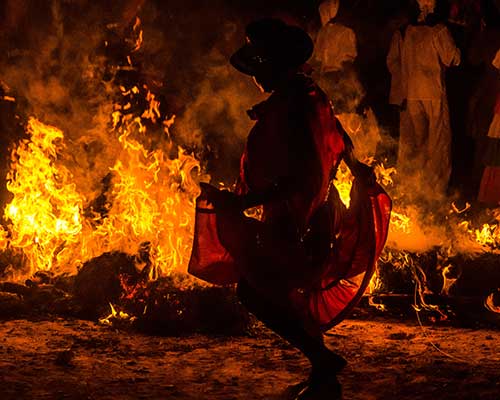
Cuba Fire Festival
Organized by Casa del Caribe, the annual Cuba Fire Festival will take place in Santiago de Cuba from July 2, 2026 to July 9, 2026. With musical venues at 50 locations and city streets lined with bars and stalls, rum-fuelled revellers get in the festival spirit as live bands, musicians and DJs keep crowds at fever pitch well into the nighttime hours.
Book NowCuba Fire Festival
Organized by Casa del Caribe, the annual Cuba Fire Festival will take place in Santiago de Cuba from July 2, 2026 to July 9, 2026. With musical venues at 50 locations and city streets lined with bars and stalls, rum-fuelled revellers get in the festival spirit as live bands, musicians and DJs keep crowds at fever pitch well into the nighttime hours.
Book Now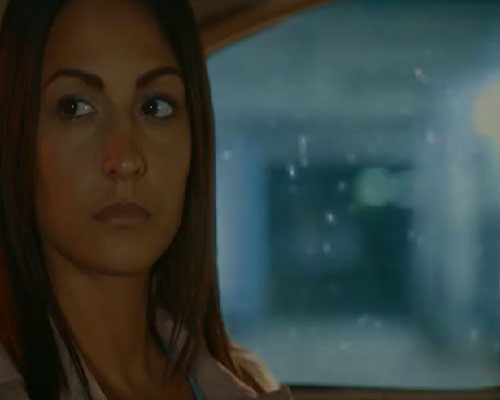
Havana Film Festival
The Havana Film Festival promotes the cinematographic works of Spanish- language filmmakers from Latin America, Spain and Cuba. It is sponsored by the Cuban Institute of the Cinematographic Art and Industry, ICAIC. The 46th edition of the Festival International del Nuevo Cine Latinoamericano will take place from December 4, 2025 to December 14, 2025.
Book NowHavana Film Festival
The Havana Film Festival promotes the cinematographic works of Spanish- language filmmakers from Latin America, Spain and Cuba. It is sponsored by the Cuban Institute of the Cinematographic Art and Industry, ICAIC. The 46th edition of the Festival International del Nuevo Cine Latinoamericano will take place from December 4, 2025 to December 14, 2025.
Book Now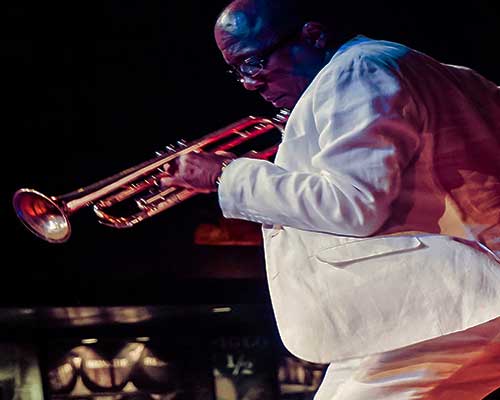
Havana Jazz Festival
The 41st International Jazz Festival of Havana, which is sponsored by famed Cuban jazz artist Chucho Valdes and ICM, or the Cuban Institute of Music, will be held in numerous locations throughout La Habana from January 25, 2026 to February 1, 2026. More than 100 international bands have joined Cuba’s top Jazz musicians in previous festivals.
Book NowHavana Jazz Festival
The 41st International Jazz Festival of Havana, which is sponsored by famed Cuban jazz artist Chucho Valdes and ICM, or the Cuban Institute of Music, will be held in numerous locations throughout La Habana from January 25, 2026 to February 1, 2026. More than 100 international bands have joined Cuba’s top Jazz musicians in previous festivals.
Book Now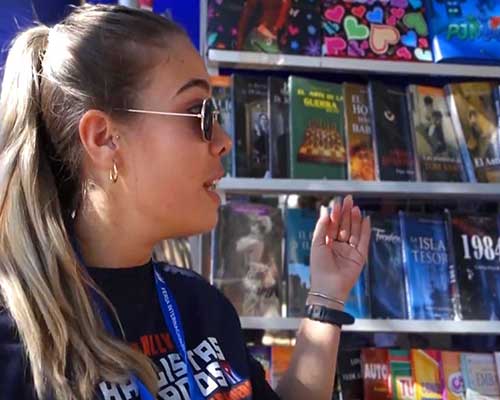
Havana Book Fair
The 34th International Book Fair of Havana will take place in Havana City from February 12 to February 22, 2026. Along with the public, the book fair is attended by Cuban and international authors, publishers, and political officials. Organized by the Cuban Book Institute, the fair transforms the Spanish fortification La Cabana into one of the biggest book parties in the world.
Book NowHavana Book Fair
The 34th International Book Fair of Havana will take place in Havana City from February 12 to February 22, 2026. Along with the public, the book fair is attended by Cuban and international authors, publishers, and political officials. Organized by the Cuban Book Institute, the fair transforms the Spanish fortification La Cabana into one of the biggest book parties in the world.
Book Now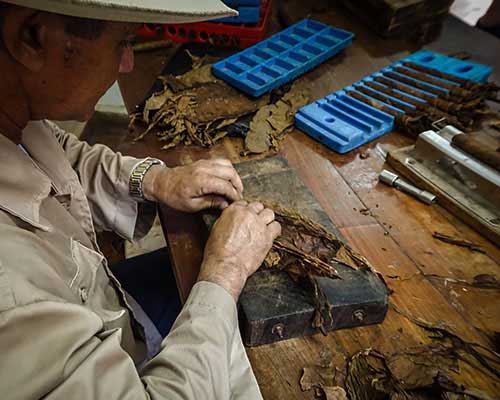
Habano Cigar Festival
Considered by many to be the world’s biggest premium cigar celebration, the XXVI Cigar Festival of Cuba will take place from February 23 to February 27, 2026. The Habano Cigar Festival's Exhibit Fair at Palacio de Las Convenciones regularly attracts some 1500 producers, distributors and businessmen, as well as large numbers of Cigar aficionados and tourists.
Book NowHabano Cigar Festival
Considered by many to be the world’s biggest premium cigar celebration, the XXVI Cigar Festival of Cuba will take place from February 23 to February 27, 2026. The Habano Cigar Festival's Exhibit Fair at Palacio de Las Convenciones regularly attracts some 1500 producers, distributors and businessmen, as well as large numbers of Cigar aficionados and tourists.
Book Now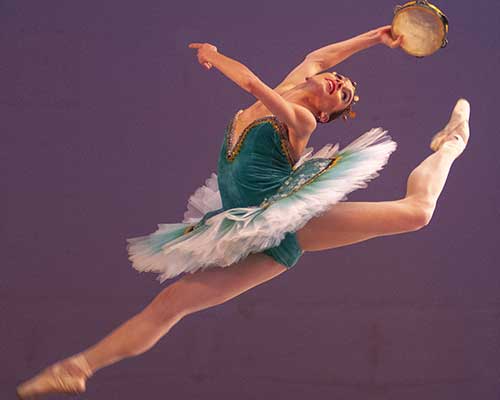
Havana Ballet Festival
The 29th Anniversary of the International Ballet Festival of Havana Alicia Alonso will take place from October 28 to November 6, 2026. Dancers, ballet companies, and choreographers from across the world look forward to the event, which is hosted by Cuba’s National Ballet at the Great Theatre of Havana, the Karl Marx Theatre and the Mella Theatre.
Book NowHavana Ballet Festival
The 29th Anniversary of the International Ballet Festival of Havana Alicia Alonso will take place from October 28 to November 6, 2026. Dancers, ballet companies, and choreographers from across the world look forward to the event, which is hosted by Cuba’s National Ballet at the Great Theatre of Havana, the Karl Marx Theatre and the Mella Theatre.
Book Now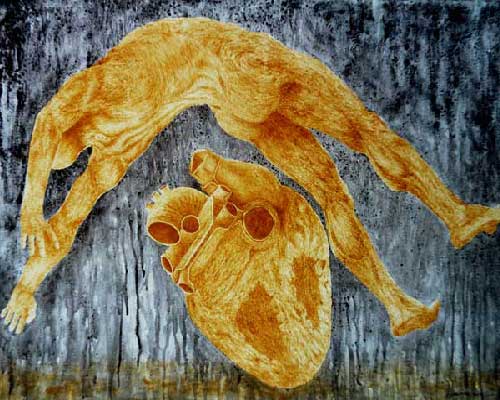
Havana Art Biennial
The 16th Havana Art Biennial will take place from November 15, 2027 to February 28, 2028. The rooster of international and national visual artists will include more than 200 creators from about 20 countries. According to the Wifredo Lam Art Center (organizing institution), the festival will turn the city into an interactive cultural corridor between the creators and public.
Book NowHavana Art Biennial
The 16th Havana Art Biennial will take place from November 15, 2027 to February 28, 2028. The rooster of international and national visual artists will include more than 200 creators from about 20 countries. According to the Wifredo Lam Art Center (organizing institution), the festival will turn the city into an interactive cultural corridor between the creators and public.
Book Now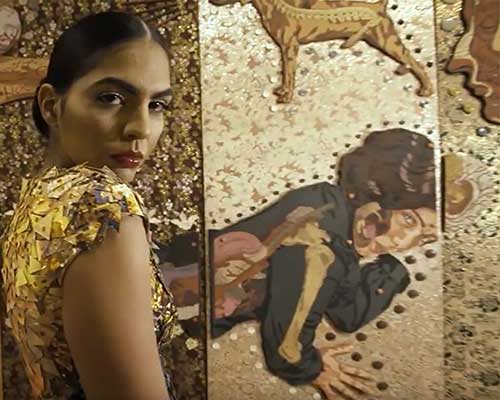
Art & Fashion Festival
The 22nd Edition of the Arte y Moda Festival will take place in the Cuban capital from November 6 to 8, 2026. The event showcases the creativity and innovation of Cuban designers, particularly their emphasis on sustainability through the use of natural and recycled materials. They utilize innovative textiles, focusing on experimental and forward looking fashion.
Book NowArt & Fashion Festival
The 22nd Edition of the Arte y Moda Festival will take place in the Cuban capital from November 6 to 8, 2026. The event showcases the creativity and innovation of Cuban designers, particularly their emphasis on sustainability through the use of natural and recycled materials. They utilize innovative textiles, focusing on experimental and forward looking fashion.
Book Now







CUBA TOUR FINDER
Select your authentic Cuba trip from over 70 Cuba tours in seconds. Sort by departure date, price, destination and even Cuba travel theme.
QUICK CUBA TOUR FINDERCuba Themed Tours
If you’ve got an idea of which style of trip will suit you best, take a look at our different trip themes below, as there’s something to suit everyone. Not only are there themed tours to fit any budget and interest, each Authentic Cuba Travel® experience immerses you in the authentic Cuba so hard to explore while just staying in full packed beach resorts.
Festival Tours
Our festival tours give travelers VIP access to all venues and happenings of Cuba’s famous international events such as the Havana Jazz Festival, Book Fair, Ballet Festival and others.
Study Tours
Through peer to peer interaction, our Cuba Study Tours® transcend ordinary tourism by immersing American students in the local culture, history, politics, music and contemporary arts.
Cultural Tours
Cuba Pathfinder® is your gateway to discover the unique Cuban cultural heritage, a set of traditions & memories not showcased in museums but much alive & thriving.
Architecture Tours
An architectural passage through Cuba’s best preserved colonial cities and unique architectural heritage, our architecture tours visit all UNESCO World Heritage Sites in Cuba.
Photography Tours
Capturing stirring pictures of authentic Cuban destinations it is not the only mission of our photography tours. Capture the essence of the Cuban culture and the kindness of its people.
Educational Tours
Our educational tours represents a great opportunity for K-12 teachers, university & college professors to explore Cuba’s education system while exploring colonial cities, towns and villages.
Nature Tours
An odyssey into Cuba's tropical paradise, our nature & bird watching tours gain access to the most pristine natural sites, from UNESCO Biosphere Reserves to National Parks.
Jewish Tours
A journey into the Jewish history in Cuba, our tours will strengthen the ties between Cuban Jewish communities and North American Jews. All while visiting 4 UNESCO World Heritage Sites!
Sports Tours
What sets our sports tours apart are the private exchanges with players, coaches & staff as well as sports journalists & personalities. Then you have best seats at the games!
List of Cuba Tours 2026
-
Tour Name
Tour Dates
Cost
-
Havana Film Festival
Havana, Vinales
Dec 8- Dec 15, 2025
$2,899 Book Now
-
Real Cuba Tour 12
Havana, Las Terrazas, Vinales
Dec 26- Jan 2, 2026
$2,799 Book Now
-
Cuba Engage Tour 12
Havana, Bay of Pigs, Trinidad
Dec 26- Jan 2, 2026
$2,799 Book Now
-
Cuba Education Tour 9
Havana, Cienfuegos, Trinidad
Dec 26- Jan 2, 2026
$2,599 Book Now
-
Cuba Education Tour 10
Havana, Bay of Pigs, Santa Clara
Dec 26- Jan 2, 2026
$2,599 Book Now
-
Cuba Education Tour 11
Havana, Santiago de Cuba
Dec 26- Jan 2, 2026
$2,799 Book Now
-
Bird Watching Tour
Havana, Zapata, Trinidad
Dec 26- Jan 2, 2026
$2,599 Book Now
-
Cuba Architecture II
Havana, Cienfuegos, Trinidad
Dec 26- Jan 2, 2026
$2,799 Book Now
-
Cuba Art Explorer IV
Havana, Las Terrazas
Dec 26- Jan 2, 2026
$2,799 Book Now
-
Photography Tour IV
Havana, Vinales, Trinidad
Dec 26- Jan 2, 2026
$2,729 Book Now
-
Jewish Heritage Tour
Havana, Cienfuegos, Trinidad
Dec 26- Jan 2, 2026
$2,899 Book Now
-
Family Discovery Tour
Havana, Cienfuegos, Trinidad
Dec 26- Jan 2, 2026
$2,699 Book Now
-
Real Cuba Tour 1
Havana, Las Terrazas, Vinales
Jan 10- Jan 17, 2026
$2,599 Book Now
-
Cuba Engage Tour 1
Havana, Bay of Pigs, Trinidad
Jan 10- Jan 17, 2026
$2,599 Book Now
-
Cuba Jazz Festival
Havana, Cienfuegos, Trinidad
Jan 25- Feb 2, 2026
$3,099 Book Now
-
Santiago Jazz Festival
Santiago de Cuba
Jan 25- Feb 1, 2026
$2,899 Book Now
-
Havana Jazz Festival
Havana, Vinales
Jan 28- Feb 2, 2026
$2,499 Book Now
-
Havana Book Fair
Havana, Cienfuegos, Trinidad
Feb 13- Feb 20, 2026
$2,799 Book Now
-
Real Cuba Tour 2
Havana, Las Terrazas, Vinales
Feb 7- Feb 14, 2026
$2,599 Book Now
-
Cuba Engage Tour 2
Havana, Bay of Pigs, Trinidad
Feb 7- Feb 14, 2026
$2,599 Book Now
-
Habano Cigar Festival
Havana, Vinales
Feb 21- Feb 28, 2026
$8,999 Book Now
-
Cuba Education Tour 1
Havana, Cienfuegos, Trinidad
Feb 21- Feb 28, 2026
$2,599 Book Now
-
Cuba Education Tour 2
Havana, Cienfuegos, Trinidad
Feb 28- Mar 7, 2026
$2,599 Book Now
-
Cuba Al Natural
Havana, Zapata, Trinidad
Mar 7- Mar 18, 2026
$2,859 Book Now
-
Cuba Business Tour 1
Havana, Matanzas, Varadero
Mar 7- Mar 14, 2026
$2,599 Book Now
-
Healthcare Cuba Tour 1
Havana, Cienfuegos, Trinidad
Mar 7- Mar 14, 2026
$2,599 Book Now
-
Real Cuba Tour 3
Havana, Las Terrazas, Vinales
Mar 7- Mar 14, 2026
$2,599 Book Now
-
Cuba Engage Tour 3
Havana, Bay of Pigs, Trinidad
Mar 7- Mar 14, 2026
$2,599 Book Now
-
Cuba Art Explorer I
Havana, Vinales
Mar 7- Mar 14, 2026
$2,599 Book Now
-
Bird Watching Tour
Havana, Zapata, Trinidad
Mar 7- Mar 14, 2026
$2,599 Book Now
-
Cuba Education Tour 3
Havana, Cienfuegos, Trinidad
Mar 7- Mar 14, 2026
$2,599 Book Now
-
Cuba Education Tour 4
Havana, Vinales
Mar 14- Mar 21, 2026
$2,599 Book Now
-
Photography Tour I
Havana, Vinales, Trinidad
Apr 4- Apr 11, 2026
$2,629 Book Now
-
The Nature of Cuba
Havana, Vinales, Trinidad
Apr 4- Apr 13, 2026
$2,799 Book Now
-
Real Cuba Tour 4
Havana, Las Terrazas, Vinales
Apr 4- Apr 11, 2026
$2,599 Book Now
-
Cuba Engage Tour 4
Havana, Bay of Pigs, Trinidad
Apr 4- Apr 11, 2026
$2,599 Book Now
-
4 Biosphere Reserves
Rosario, Zapata, Buenavista
May 1- May 10, 2026
$2,999 Book Now
-
Real Cuba Tour 5
Havana, Las Terrazas, Vinales
May 9- May 16, 2026
$2,599 Book Now
-
Cuba Engage Tour 5
Havana, Bay of Pigs, Trinidad
May 9- May 16, 2026
$2,599 Book Now
-
Photography Tour II
Havana, Vinales, Trinidad
Jun 6- Jun 13, 2026
$2,629 Book Now
-
Cuba Art Explorer II
Havana, Cienfuegos, Trinidad
Jun 6- Jun 13, 2026
$2,599 Book Now
-
Cuba Education Tour 5
Havana, Cienfuegos, Trinidad
Jun 6- Jun 13, 2026
$2,599 Book Now
-
Real Cuba Tour 6
Havana, Las Terrazas, Vinales
Jun 6- Jun 13, 2026
$2,599 Book Now
-
Cuba Engage Tour 6
Havana, Bay of Pigs, Trinidad
Jun 6- Jun 13, 2026
$2,599 Book Now
-
Cuba Fire Festival
Havana, Santiago de Cuba
Jul 2- Jul 9, 2026
$2,799 Book Now
-
Real Cuba Tour 7
Havana, Las Terrazas, Vinales
Jul 4- Jul 11, 2026
$2,599 Book Now
-
Cuba Engage Tour 7
Havana, Bay of Pigs, Trinidad
Jul 4- Jul 11, 2026
$2,599 Book Now
-
Cuba Business Tour 2
Havana, Matanzas, Varadero
Jul 4- Jul 11, 2026
$2,599 Book Now
-
Healthcare Cuba Tour 2
Havana, Cienfuegos, Trinidad
Jul 4- Jul 11, 2026
$2,599 Book Now
-
Cuba Education Tour 6
Havana, Santiago de Cuba
Jul 4- Jul 11, 2026
$2,799 Book Now
-
Cuba Education Tour 7
Havana, Las Terrazas & Vinales
Jul 11- Jul 18, 2026
$2,599 Book Now
-
Jews of Cuba Travel
Havana, Santa Clara, Cienfuegos
Aug 6- Aug 13, 2026
$2,799 Book Now
-
Real Cuba Tour 8
Havana, Las Terrazas, Vinales
Aug 8- Aug 15, 2026
$2,599 Book Now
-
Cuba Engage Tour 8
Havana, Bay of Pigs, Trinidad
Aug 8- Aug 15, 2026
$2,599 Book Now
-
Photography Tour III
Havana, Vinales, Trinidad
Aug 8- Aug 15, 2026
$2,629 Book Now
-
Cuba Education Tour 8
Havana, Cienfuegos, Trinidad
Aug 8- Aug 15, 2026
$2,599 Book Now
-
Cuba Art Explorer III
Havana, Vinales
Aug 8- Aug 15, 2026
$2,599 Book Now
-
Cuba Legal Travel
Havana, Vinales
Aug 8- Aug 15, 2026
$2,799 Book Now
-
Cuba Architecture I
Havana, Cienfuegos, Trinidad
Aug 8- Aug 15, 2026
$2,599 Book Now
-
Seven Cities II
Havana, Santiago de Cuba
Aug 8- Aug 19, 2026
$3,329 Book Now
-
Real Cuba Tour 9
Havana, Las Terrazas, Vinales
Sep 5- Sep 12, 2026
$2,599 Book Now
-
Cuba Engage Tour 9
Havana, Bay of Pigs, Trinidad
Sep 5- Sep 12, 2026
$2,599 Book Now
-
Baseball Tour
Havana, Cienfuegos, Trinidad
Sep 5- Sep 12, 2026
$2,999 Book Now
-
African Heritage
Havana, Las Terrazas, Vinales
Oct 3- Oct 9, 2026
$2,699 Book Now
-
Real Cuba Tour 10
Havana, Las Terrazas, Vinales
Oct 3- Oct 10, 2026
$2,599 Book Now
-
Cuba Engage Tour 10
Havana, Bay of Pigs, Trinidad
Oct 3- Oct 10, 2026
$2,599 Book Now
-
Dance Cuba Tour
Havana, Las Terrazas
Oct 3- Oct 10, 2026
$2,599 Book Now
-
Performing Arts Tour
Havana, Cienfuegos, Trinidad
Oct 3- Oct 10, 2026
$2,599 Book Now
-
Cuba Ballet Festival
Havana, Vinales
Oct 31- Nov 7, 2026
$2,999 Book Now
-
Jo Jazz Havana
Havana, Las Terrazas, Vinales
Nov 4- Nov 11, 2026
$2,799 Book Now
-
Seven Cities I
Havana, Santiago de Cuba
Nov 5- Nov 16, 2026
$3,329 Book Now
-
Cuba Nature Tour
Havana, Vinales, Trinidad
Nov 6- Nov 15, 2026
$2,799 Book Now
-
Art & Fashion Festival
Havana, Cienfuegos, Trinidad
Nov 6- Nov 13, 2026
$2,699 Book Now
-
Real Cuba Tour 11
Havana, Las Terrazas, Vinales
Nov 7- Nov 14, 2026
$2,599 Book Now
-
Cuba Engage Tour 11
Havana, Bay of Pigs, Trinidad
Nov 7- Nov 14, 2026
$2,599 Book Now
-
Cuba Business Tour 3
Havana, Matanzas, Varadero
Nov 7- Nov 14, 2026
$2,599 Book Now
-
Healthcare Cuba Tour 3
Havana, Cienfuegos, Trinidad
Nov 7- Nov 14, 2026
$2,599 Book Now
-
Havana Art Biennial
Havana, Vinales
Dec 11- Dec 18, 2027
$2,799 Book Now
SUBSCRIBE
Be in the know and sign up for email updates from Authentic Cuba Travel®. Our monthly Newsletters are full of great information for North American schools and educational institutions, their students, faculty and staff, as well as all those travellers interested in Cuba's educational system. Last minute discounts on Cuba education tours, contests and featured educational travel opportunities. All to keep you up to date with the world of Authentic Cuba Travel®.
NewsletterMemberships & Affiliations
Bella Travel Group Ltd. (Federal Corporation number: 765324-7) owns and operates the following registered trademarks: Authentic Cuba Travel® is a trademark registered at the Canadian Intellectual Property Office (CIPO), Registration No. TMA975677 | Cuba Pathfinder® is a trademark registered at the Canadian Intellectual Property Office (CIPO), Registration No. TMA997988 | Cuba Pathfinder® is a trademark registered at the United States Patent and Trademark Office (USPTO), Registration No. 5498353 | Cuba Study Tours, Make Cuba Your Classroom® is a trademark registered at the United States Patent and Trademark Office (USPTO), Registration No. 5833051.

 1-877-280-2054 (North America)
1-877-280-2054 (North America) 647-351-8191
(Worldwide)
647-351-8191
(Worldwide)
 647-351-8191
(Worldwide)
647-351-8191
(Worldwide)


